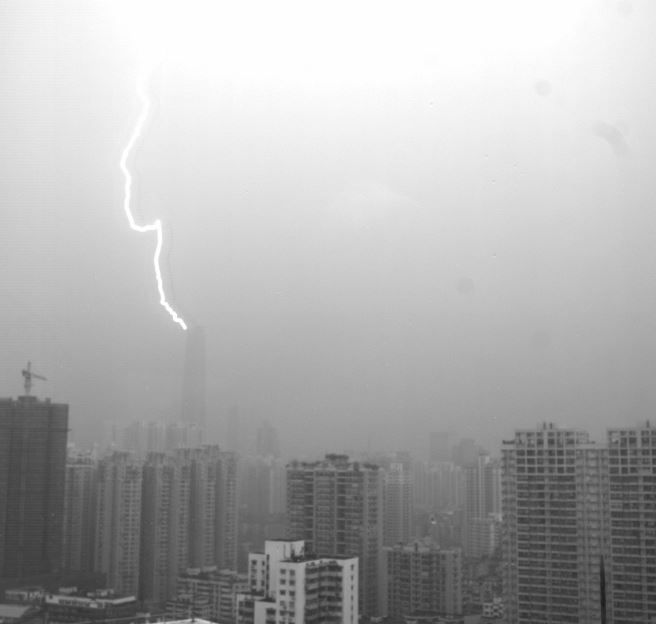Weird Lightning Strike Sheds Light on Physics of Formation

Using ultrahigh-speed video cameras, researchers have discovered a configuration of lightning never before captured on camera, they report in a new study.
Lightning strikes that hit the ground generally consist of two branched formations called leaders: A negatively charged leader propagating down from a storm cloud, and a positively charged leader traveling up from the ground into the sky. The flash associated with lightning strikes marks the moment when these so-called upward and downward leaders meet and release a burst of energy.
Scientists previously thought that downward- and upward- connecting leaders always touched tip-to-tip. But now, researchers based at the Laboratory of Lightning Physics and Protection Engineering at the Chinese Academy of Meteorological Sciences in Beijing have used high-speed video cameras capable of collecting 10,000 to 50,000 frames per second to watch lightning strikes unfold over the course of fractions of a second, and have found that this tip-to-tip behavior does not always occur: In one case, they observed a downward leader attach 220 feet (67 meters) below the tip of the upward leader. [Images of Lightning Connecting]
This lopsided arrangement does not have any noticeable effect on the strength or nature of the lightning strike, but is still important to consider in future lightning research, study co-author Vladimir Rakov of the University of Florida told LiveScience.
"This is mostly important for understanding the physics of lightning and how lightning works because lightning is composed of many processes," Rakov said. "Some of those processes are well-studied and well-understood, but attachment processes are poorly understood."
While this is the first time that this configuration has been captured on camera, it is probably not a rare occurrence, Rakov said. Instead, capturing the event simply requires a high-speed camera and the luck of being in the right place at the right time.
The researchers hope that their analyses will ultimately help inform and improve lightning protection systems. Such systems usually consist of metallic poles — called lightning rods— installed on the top of buildings to attract lightning strikes. Metal wires travel from the rod into the ground beneath the building, diverting the energy of strikes away from the building and into the ground.
Sign up for the Live Science daily newsletter now
Get the world’s most fascinating discoveries delivered straight to your inbox.
In open spaces where lightning rods have not been installed, injuries and fatalities related to lightning still do occur. Within the past 30 years, lightning strikes have accounted for an average of roughly 53 deaths per year within the United States, according to the National Weather Service. Improving lightning protection systems is thus an important public safety measure, Rakov said.
Chris Stone, a laboratory engineer with the Morgan-Botti Lightning Laboratory at Cardiff University in the U.K., does not think that the new findings will directly improve lightning protection systems, but still finds the discovery interesting.
"I'm sure the images will be important in future understanding of the processes that take place during a lightning strike and the relationship between the downward stepped leader and the upward streamer," Stone, who was not involved in the study, told LiveScience. "It's an interesting subject and worthy of further investigation."
The researchers detailed their findings in the October issue of the journal Geophysical Research Letters.
Follow Laura Poppick on Twitter. Follow us @livescience, Facebook & Google+. Original article on LiveScience.













